Celebrate the Unique Surinam Cherry
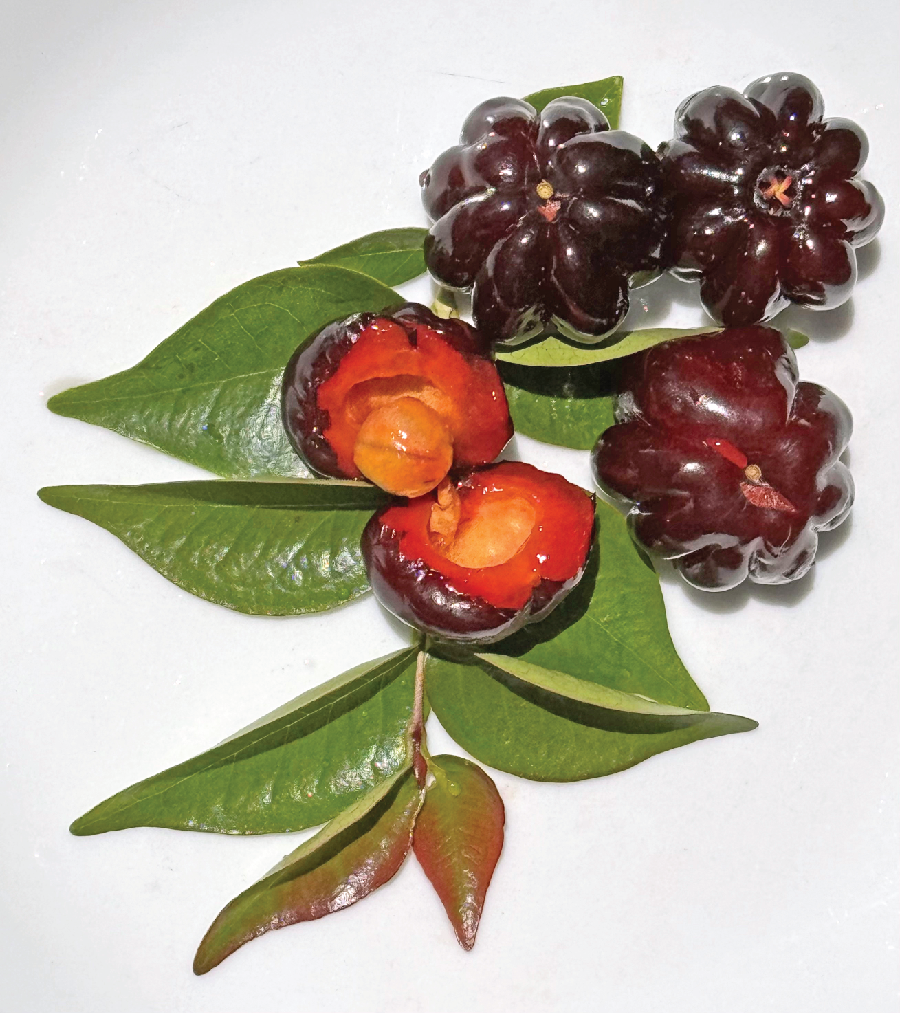
With a flavor unlike any other fruit, the Surinam cherry is actually a berry. These one inch berries are atop a small branch showing the reddish new leaves of the tree. (DeLayne Harmon)
By DeLayne Harmon
(This article originally appeared in the Nov/Dec 2024 issue of California Gardens)
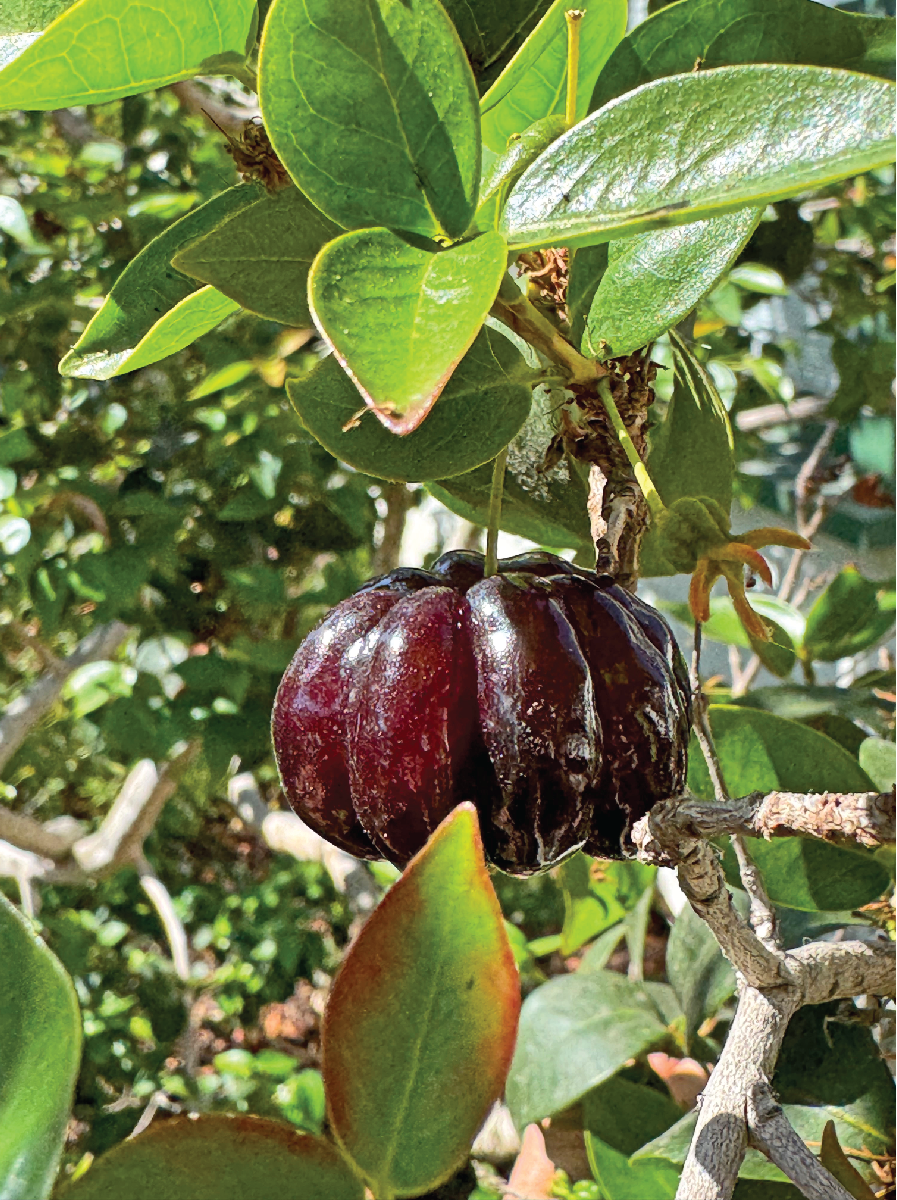
The open vase shape of my multi-trunked Surinam cherry tree in February of 2021. (DeLayne Harmon)
When we share a first taste of our “Black Star” Surinam cherry (Eugenia uniflora) with a friend, we say, “take it slow”. Like a sip of an expensive wine, smell it first. Your mouth begins to water at the piquant perfume. Then rather than eating the whole cherry at once, take a nibble or two and savor the sweet tart juice sparkling with a flavor unlike any fruit you’ve tasted before. Then pop it in your mouth and let the tasty berry burst, being aware of at least one cherry-like pit in the center that is high in resins and can cause gastric upset. The unique peppery fruity flavor of the Surinam cherry, also commonly called the pitanga, or Brazilian cherry, is complex. I watch eagerly for fruit to ripen on my tree so I can savor them and sometimes, if I’m feeling generous, share them with friends. Luckily, they fruit up to four times a year!
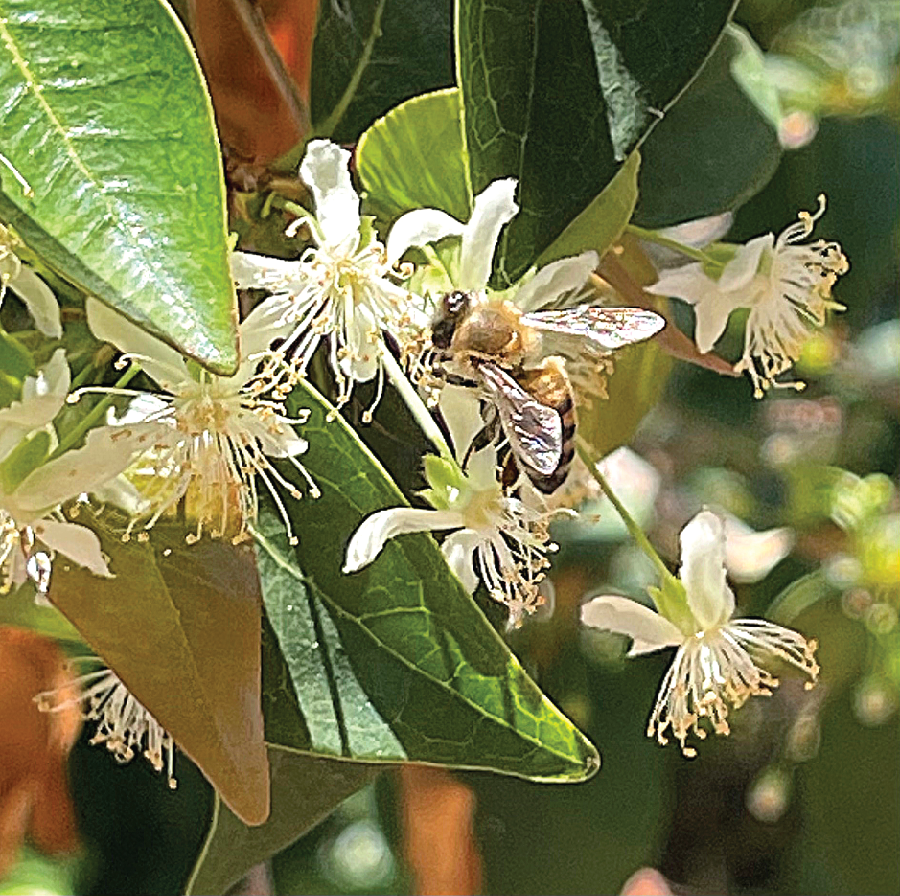
A European honey bee (Apis mellifera Linnaeus) collecting pollen from the delicate blooms of the Eugenia uniflora. (DeLayne Harmon)
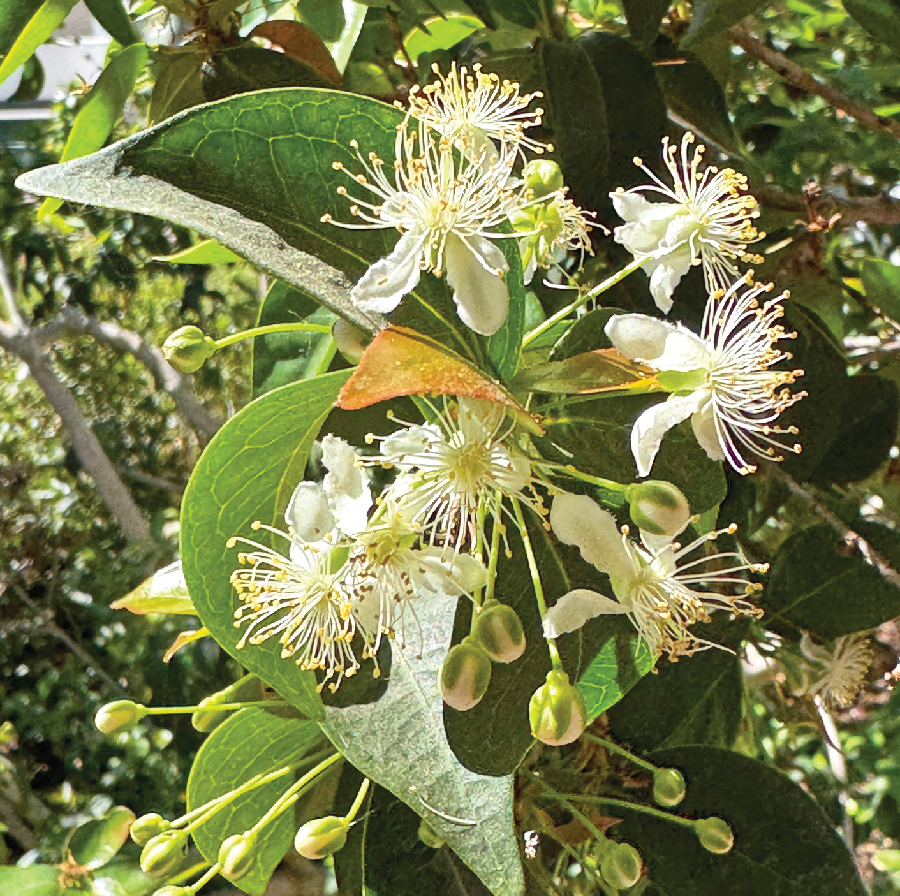
Blooms and buds of the Surinam cherry tree and a young orange fruit that will get larger and turn deep purple when ripe. Other Surinam cherry varieties are red, yellow and orange, and they all have slightly different flavor profiles. (DeLayne Harmon)
Some people don’t care for the taste of pitanga. My guess is most of them have only tried one of the also beautiful but more resinous orange or red varieties. I have heard some compare the unpleasant taste of some varieties as turpentine-like. So far, I’ve only had this experience with unripe fruit or some of the red or orange varieties. The subtropical Surinam cherry tree is native to eastern South America, and is one of the most researched Eugenia fruit species because of its high antioxidant and anti-inflammatory properties. Surinam cherries also contain significant amounts of vitamin C and some vitamin A.
The deeply rooted Surinam cherry tree (no, the roots aren’t known for being problematic) is an open vase-shaped multi-trunked slender-branched evergreen that grows well in San Diego’s USDA hardiness zones 9b-11. They may be pruned and kept as a small tree or even hedged. Introduced to Florida in the 1930s as an ornamental hedge, it is now considered invasive in some parts of that state. Eugenia uniflora is not invasive in Southern California all though the occasional seedlings that sprout are not true to the tasty parent plant. Tolerating some shade but preferring mostly sunny locations, the Eugenia uniflora provides a minor fruit crop that birds also enjoy. Even when not blooming or fruiting, it is a graceful specimen tree sometimes grown for beauty alone. The small (one to two-inch) ovate-lanceolate pointed leaves are a bright copper-red when young and turn a verdant glossy green when mature.
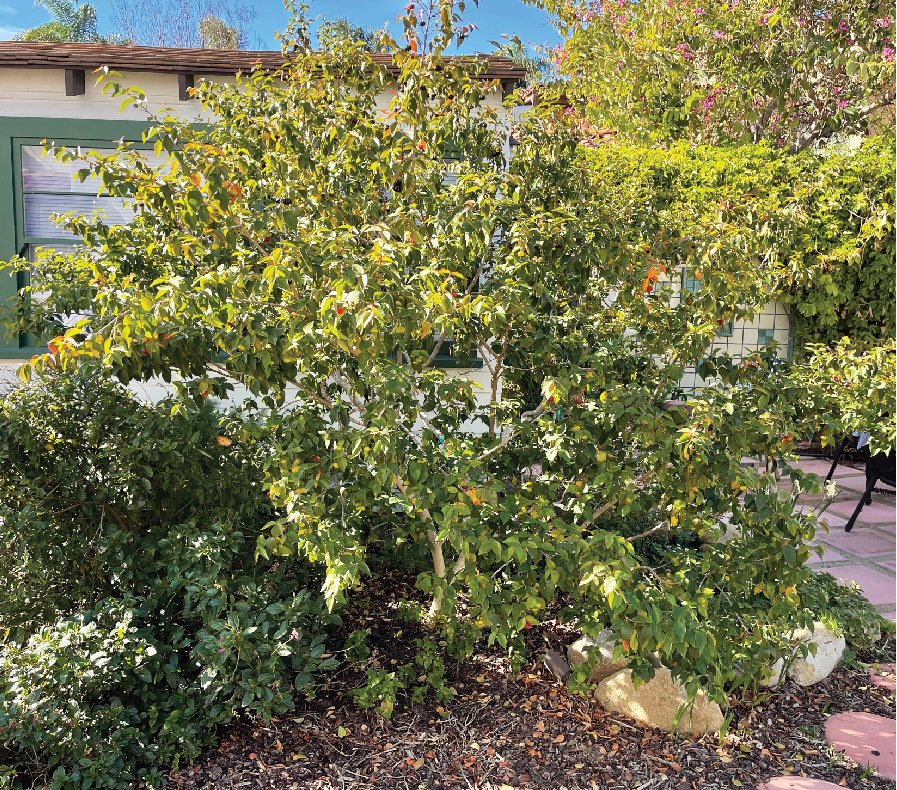
The open vase shape of my multi-trunked Surinam cherry tree in February of 2021. (DeLayne Harmon)
The Surinam’s lightly-fragrant frilly white blooms are “perfect” flowers containing both male and female reproductive organs. Their mass flowering pattern, meaning many blooms appear at the same time, attracts pollinators like bees, wasps, and small flies. Fertilized flowers develop into small green ribbed fruit that resemble a miniature pumpkin and mature in size and color depending on the variety. Though these fruits are commonly called cherries because of similarities in appearance to the stone fruit, they are really berries. Berries are fruit containing seeds and surrounded by juicy pulp. Unlike typical berries, the seeds of the E. uniflora should not be consumed. When ripe, the delicate thin-skinned E. uniflora berry will easily pull away from the stem providing you and your lucky friends with a uniquely flavorful and healthy fruit.
My Surinam cherry is also a beautiful tree providing visual interest in my San Diego garden.
DeLayne Harmon grew up digging and planting in San Diego soil and became a UCCE Master Gardener in 2020. Her historic home in Kensington is surrounded by an eclectic garden full of fruit trees, herbs, vegetables, ornamentals and a growing number of natives.

